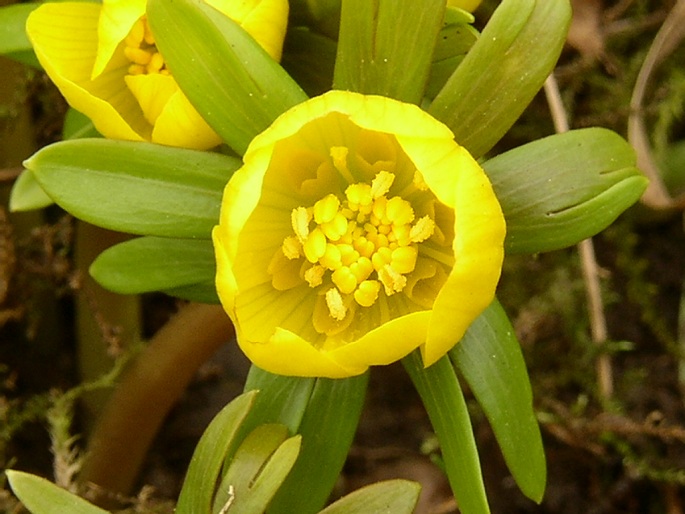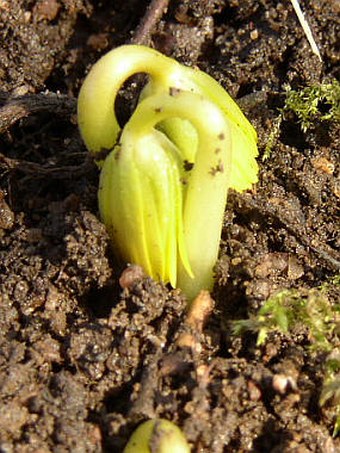Syn.: Helleborus hyemalis L.
Family: Ranunculaceae Juss.

Distribution: The Winter Aconite is native to Southeastern Europe and Western Asia, and has been introduced into North America.
Ecology: In Southern Europe it grows in damp deciduous forests, also in meadows, up to an altitude of 1 200 meters above sea level. Widely cultivated for ornament in all Europe, it grows also in parks and near settlements, along roads, in wastelands etc.
Description: A perennial tuberous plant with an erect flowering stem, 5–20 cm high, the leaves are orbicular in outline, palmately 3–5 lobed, the lobes further cut into contiguous segments. The flowers are single, 2–3,5 cm in diameter, yellow, cup-shaped, flowers early in the spring (February to April). The fruits are a follicles.
Threat and Protection: The Winter Aconite is a protected species in Hungary and Serbia.
Note: This plant is noted for its early flowering, it has been cultivated since the 16th century.





These images were taken in Czechia, Moravia, Brno (dates: from 24. 2. till 17. 4. 2003).


